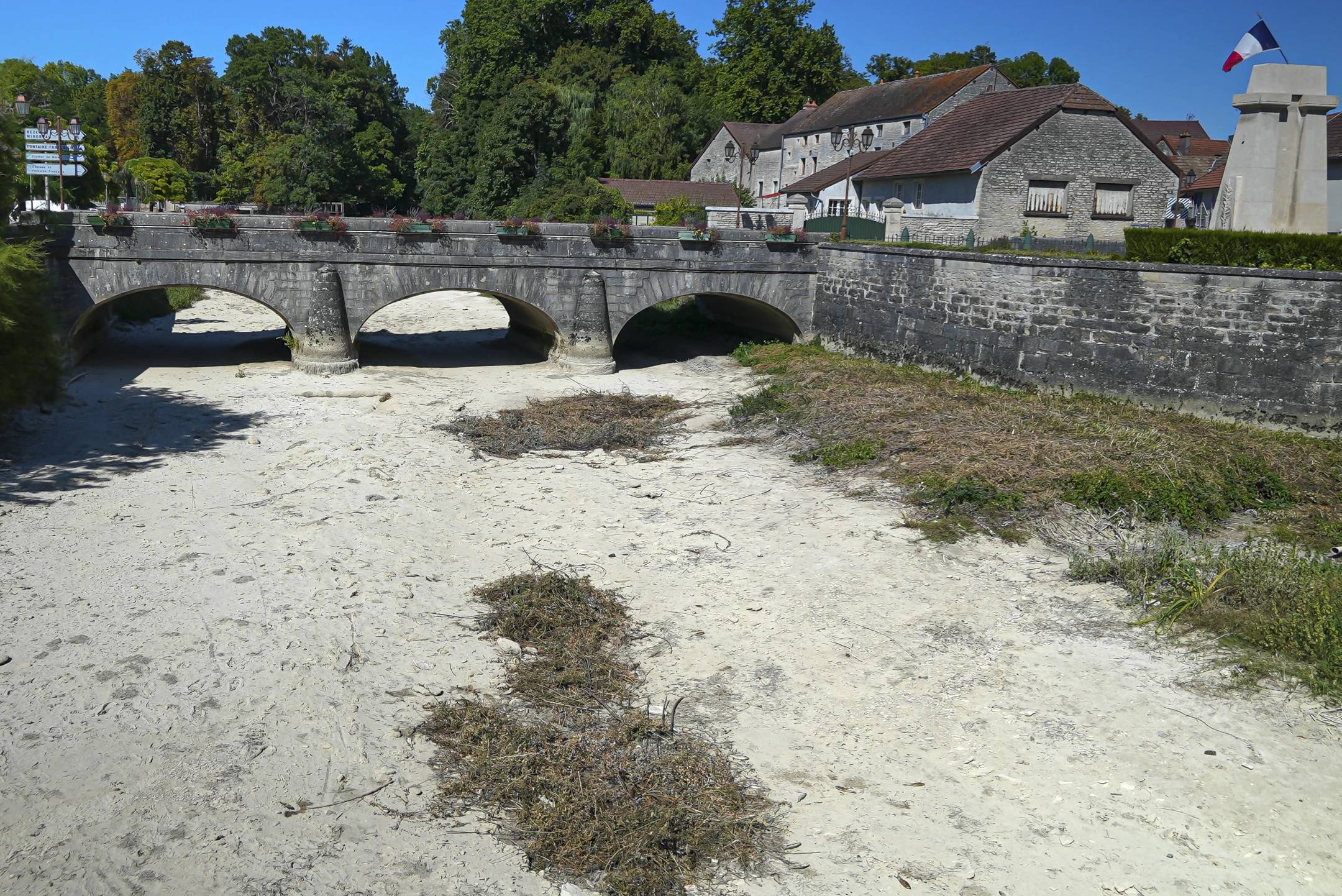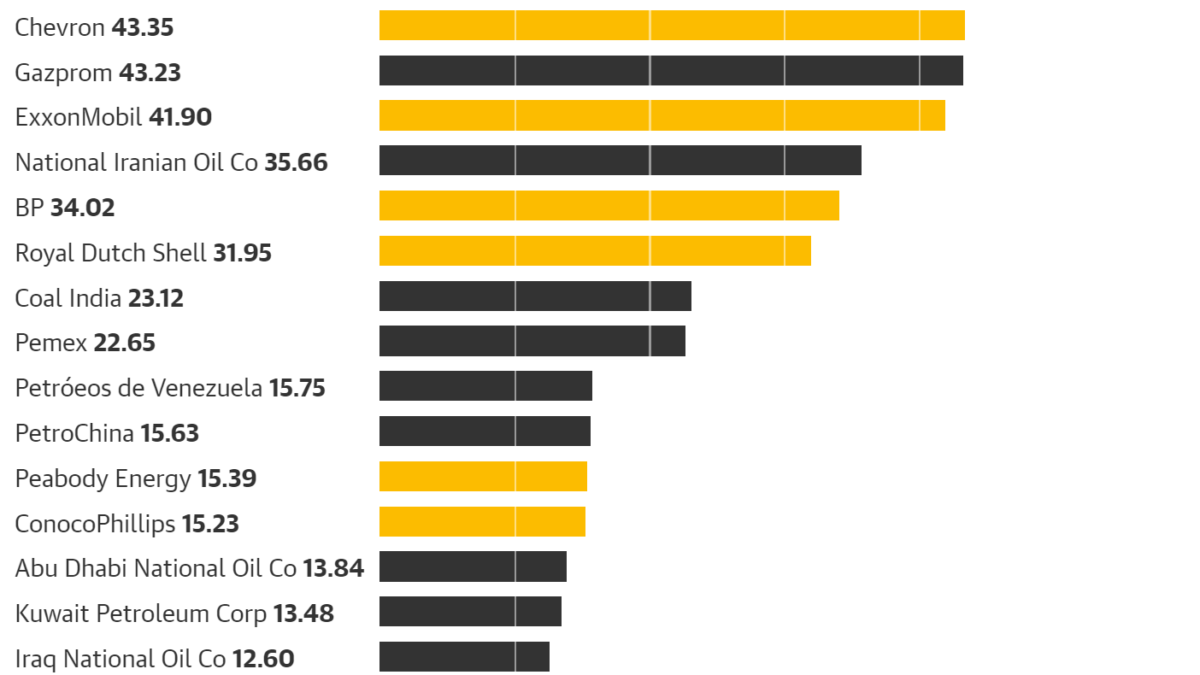Europe was once green and water-rich. Now, it’s more and more like California – “Climate change kills. It kills people, kills our ecosystem, the biodiversity.”
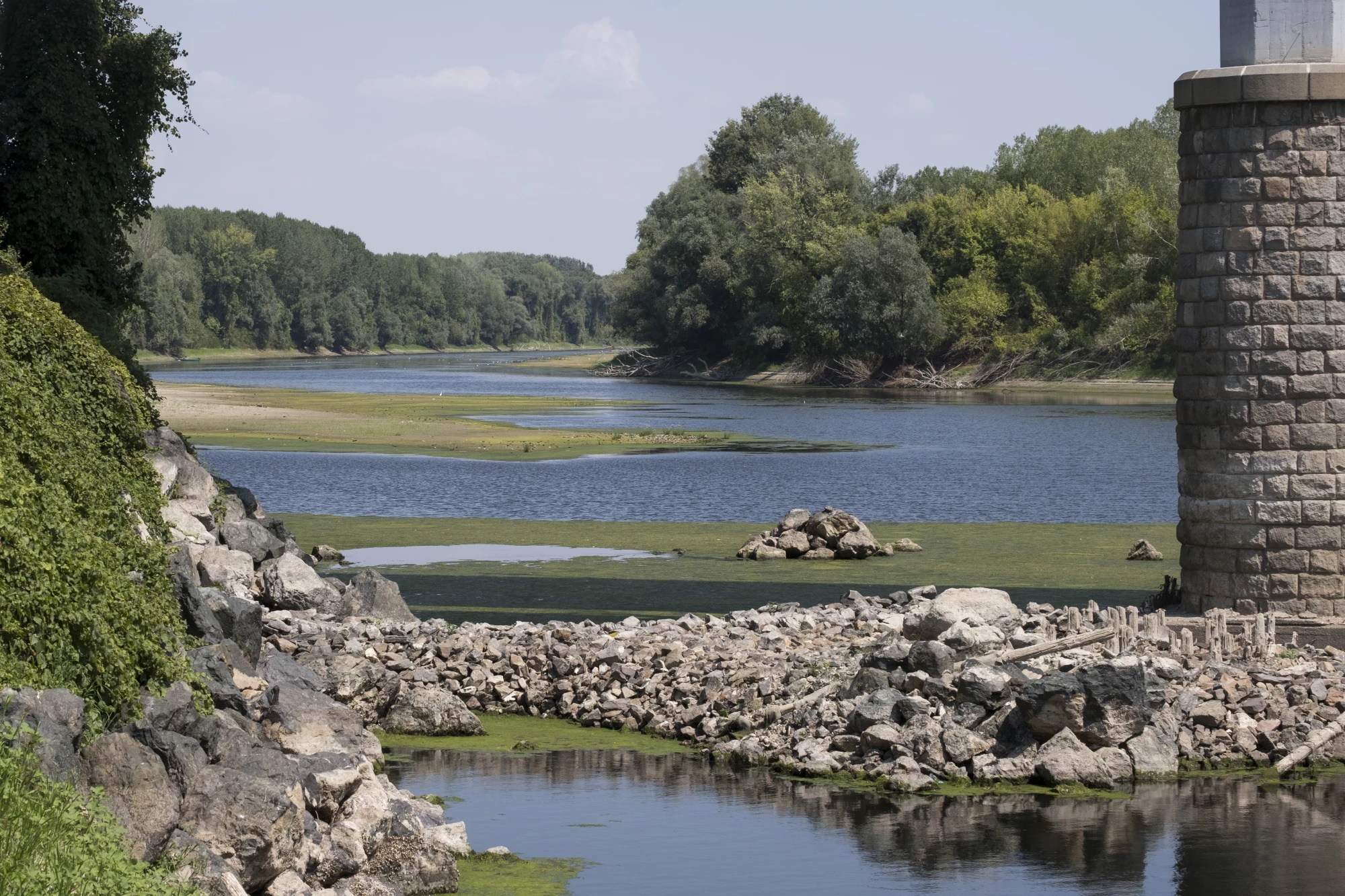
By Jaweed Kaleem and Scott Johnson
4 September 2022
(Los Angeles Times) – Each spring and summer, Frederic Esniol plants millions of seeds for lettuce sold at big grocery chains, making his family farm a jewel of this historically bountiful region of France.
But this year, a menacing combination of dry skies and record-setting heat has ruined about half of his water-hungry crop, threatening the 270-acre business about 70 miles northeast of the Mediterranean port city of Marseille.
“We’ve never seen a drought like this before,” said Esniol, 55, a fourth-generation farmer.
It’s not only France. A withered Europe faces what scientists say could be its worst water shortage in the hundreds of years on record.
Summer has brought severe drought to the northeastern U.S., which has farmers begging for rain and many communities limiting nonessential water use.
Farms are going fallow, and vineyards are seared. Reservoirs and aquifers have been depleted. Rivers have dried up to reveal Roman-era artifacts and unexploded war munitions. Wildfires have raged across a dozen countries. Scores of small cities and towns are trucking in water because the taps have run dry.
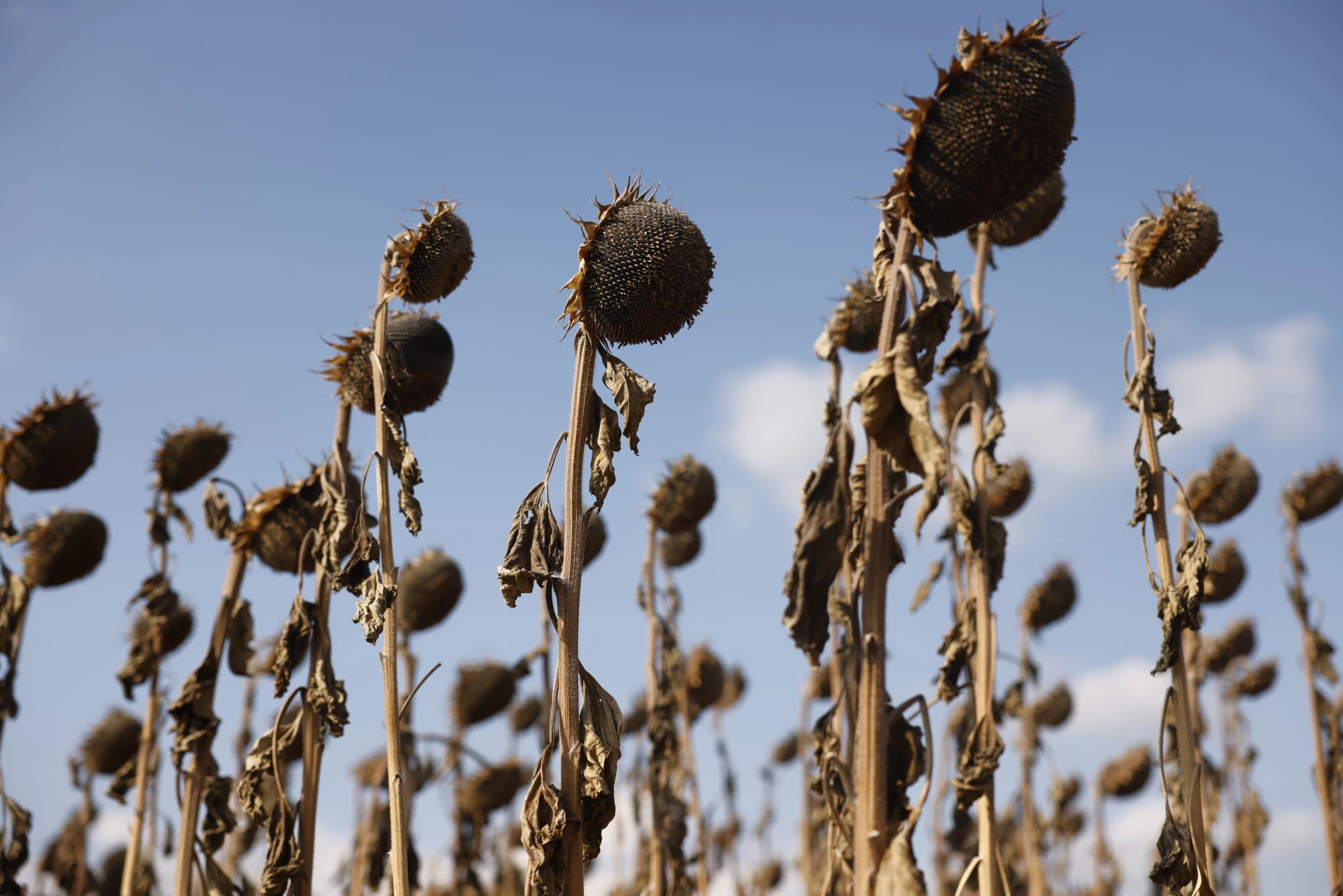
Altogether, 64% of the continent — 13 of the 27 nations in the European Union, as well as Britain, Serbia, Moldova and Ukraine — is either facing drought or in imminent danger of it, according to a recent report by EU scientists that predicted at least three more months of “warmer and drier” days.
The United Kingdom “has reminded me this summer of the times I have visited California: hot, dry and little to no rain,” said James Cheshire, a professor at University College London who studies weather patterns. “I imagine it’s not too different in many parts of Europe. It’s a very unusual time.”
Alpes-de-Haute-Provence, the region that’s home to Esniol’s farm, is accustomed to warm, arid summers. This year, triple-digit heat waves in southern France shattered records, while rainfall has been half the usual amount.
Esniol’s lettuce is prized for its crisp, leafy heads with delicate white cores, sold across France in Leclerc and Carrefour, the nation’s biggest grocery chains.
Records are tumbling as temperatures are rising across Europe, where a monster heat wave is fueling wildfires and causing deaths. The mark in London hits about 104 Fahrenheit.
But in July, the government ordered the region to drastically reduce water consumption, and the next month, the dam that supplied his farm ran dry.
Officials earmarked reserves for drinking water, firefighting and emergencies — and for limited watering on farms that produce critical food staples. Even that could not stop Esniol’s lettuce from withering in the relentless sun.
To make up for some of the loss, he has upped his wholesale price by 26% to 63 cents a head.
Nearby ranchers suffered even more.
Lily Goletto, a friend of Esniol who raises 850 sheep, said she paid $22,000 this year to buy extra feed after everything on her grazing land — sunflowers, sorghum, grass and alfalfa — died. Still, it won’t be enough.
“We’re going to have a sad autumn,” said Goletto, who plans to sell 150 ewes. “We’ll still lose money, but we don’t have any other option. Everyone is in the same boat. They’re also in a drought, which means they’re not harvesting anything either. It’s a vicious cycle, and it gets worse and worse.”
Drought isn’t new to Europe — which has a wide variety of climates and rainfall patterns — and the current one started in 2018. But scientists say human-induced climate change is transforming the continent, raising the likelihood that it will experience more frequent and persistent drought, like the American West.
“We always think Europe is a water-rich region, especially the central and northern parts,” said Rohini Kumar, a hydrologist at the Helmholtz Center for Environmental Research in Leipzig, Germany. “No longer. We are not water-rich. Over a couple of years, we have undergone dryness. We have to start rethinking what kind of crops we grow and how we manage our water.”
The shift may be linked to a high-pressure system in the North Atlantic known as the Azores High, which has expanded as the planet has warmed, researchers say. The system pushes rainfall north, causing drier conditions in Portugal, Spain and the western Mediterranean.
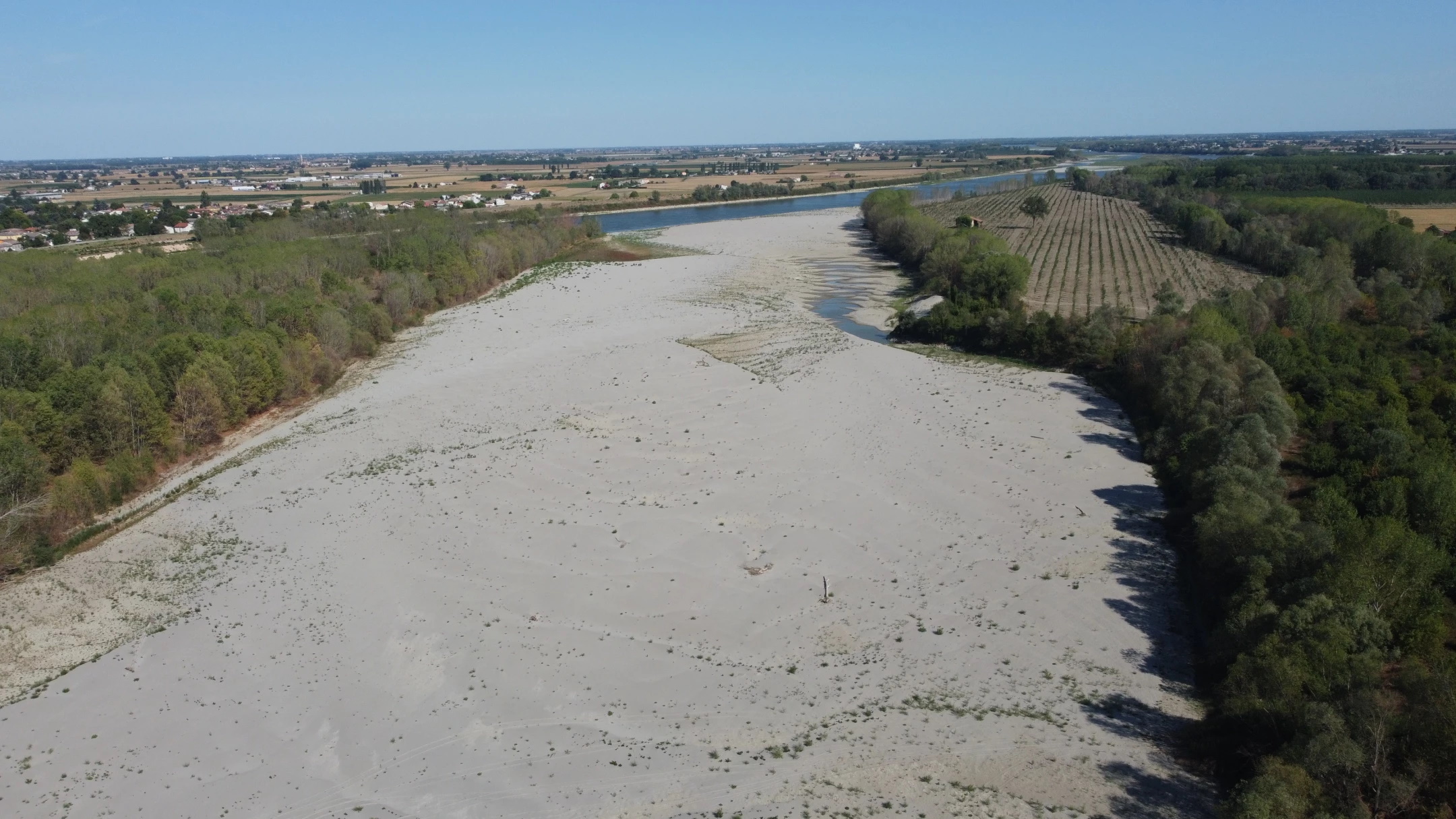
Politicians and activists have seized on the crisis as a reminder that the world is failing to meet its goals for reducing greenhouse gas emissions and is on course for even worse effects of climate change, including more fires, more severe storms and rising sea levels.
“Climate change kills,” Pedro Sánchez, the prime minister of Spain, said recently as he surveyed trees charred in a massive wildfire in Extremadura, a region bordering Portugal. “It kills people, kills our ecosystem, the biodiversity.”
The European Commission estimates that the current drought has cost the EU $9 billion a year — a figure it said could rise to $45 billion by the end of the century as the climate continues to warm.
The most immediate concern is agriculture.
In Italy, rice paddy farmers who rely on the severely depleted river Po warn of risotto shortages. In Spain, the world’s biggest producer of olive oil, reduced rainfall has cut production by a third. [More]
Europe was once green and water-rich. Now, it’s more and more like California
